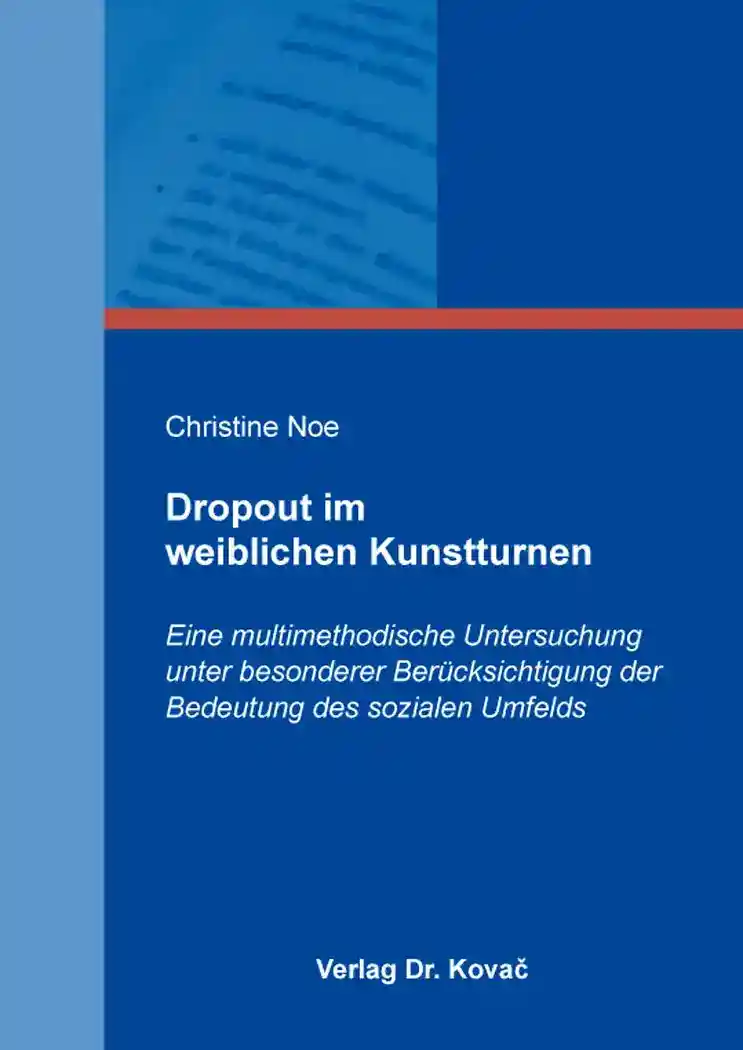Christine NoeDropout im weiblichen Kunstturnen
Eine multimethodische Untersuchung unter besonderer Berücksichtigung der Bedeutung des sozialen Umfelds
Schriften zur Sportpsychologie, volume 23
Hamburg 2019, 190 pages
ISBN 978-3-339-11058-9 (print) |ISBN 978-3-339-11059-6 (eBook)
About this book deutschenglish
The withdrawal of talented athletes constitutes one of the central problems in competitive sports. Studies about female gymnastics give evidence of some psychological and social factors as reasons for leaving this sport. The aim of this study has been to observe the epidemiology of the dropout and to investigate the possibility of predicting withdrawals in female gymnastics. For this purpose, in addition to physical and performance-related data, psychosocial factors, in particular the role of the social environment, were examined in a prospective quantitative analysis. A total of 102 female gymnasts (average age = 10.78, SD = 1.75) participated in the study. From a qualitative perspective and in retrospective, the dropout cases that occurred were analyzed in order to develop a better understanding of the conditions and reasons for dropping out. On this basis, it should be possible to derive measures for the prevention of dropouts.
Over a period of 15 months of observation, a dropout rate of 29.4% can be documented and the gymnasts who quit can be assigned to different types of dropouts. Firstly, there is the distinction between complete dropouts and withdrawals only from competitive sports. Furthermore, differences in the degree of self-determination and independence in the decision making were found. On the quantitative level, a contrast between dropouts and the active gymnasts in performance-related data becomes obvious, while there are no differences in social and anthropometric data. Taking into account all variables in a regression analysis, the competitive score at the balance beam and the trainer-athlete relationship emerge as predictor variables of a dropout from artistic gymnastics. The qualitative analysis shows that in female gymnastics all participants are exposed to complex conditions and many different factors can influence dropout events. Which of those variables will actually trigger individual events of dropout depends on the perception of gymnasts, on the one hand, and, on the other hand, on whether it is a self-determined or externally determined dropout. In externally determined dropouts the athletic performance seems to play a major role. Reasons for self-determined dropouts appear more complex. The most common issues mentioned, however, are athlete-coach relationship issues.
Keywords
DropoutElternverhaltenKarriereabbruchKunstturnenLeistungssportMotivationNachwuchstrainingPsychologieSoziales UmfeldSozialpsychologieSportmotivationSportpsychologieSportwissenschaftTrainer-Athleten-BeziehungTrainerverhaltenTurnenIhr Werk im Verlag Dr. Kovač

Möchten Sie Ihre wissenschaftliche Arbeit publizieren? Erfahren Sie mehr über unsere günstigen Konditionen und unseren Service für Autorinnen und Autoren.
